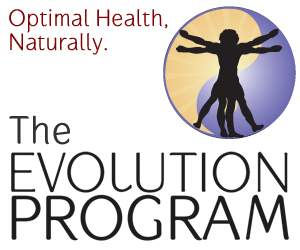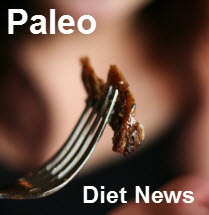Paleo Diet: What Can We Learn From The Ice Man?
Stephen Guyenet, of The Whole Health Source blog recently posted an article on his blog entitled “The Fit And Healthy Pregnancy Guide
ce-man-part.html”>Lessons From Ötzi, the Tyrolean Ice Man. Part I” and then followed it up with Part II on April 17th 2012. At 5,300 year old, Otzi is the worlds oldest natural mummy, who was found in 1991 after being quick frozen in a Glacier thousands of years ago.
What Can We Learn From The Ice Man?
“Due to his amazing state of preservation, researchers have been able to learn a lot about Otzi’s life. Based on an analysis of his tooth enamel and pollen grains found on his clothing, we know that Otzi grew up near the modern-day Italian village of Feldthurns, but later migrated to the valleys about 50 kilometers North of there (1). He was probably involved in copper smelting, judging by the high levels of copper and arsenic in his hair.
Otzi The Ice Man
On the day he died, Otzi was wearing skillfully crafted leather shoes lined with grass, a leather coat, leggings, a loincloth, a bearskin hat, and a cloak made of woven grass. He also carried a valuable copper axe, a flint knife, a fire kit, a bow and flint-tipped arrows. Otzi was an affluent but rugged mountain man armed to the teeth!
Otzi died in an armed struggle while away from home. He was shot in the back by a flint-tipped arrow, which severed an internal artery and would have been fatal (2). His body was probably turned over by his killers, who retrieved the arrow (sans arrowhead). He also sustained a head wound, which may have been due to a fall or a deliberate blow. Unpublished DNA evidence suggests that his body had the blood of four other people on it- two on an arrowhead, one on his knife, and one on his coat (3). Since he died outside his home territory, some have speculated that he was part of a raiding party. He likely killed or wounded several others and then was himself killed. Such was the life of prehistoric males.”
In Part II Stephan goes into detail about Otzi’s diet, and his health at the time of his death:
“Otzi’s Diet
Otzi’s digestive tract contains the remains of three meals. They were composed of cooked grains (wheat bread and wheat grains), meat, roots, fruit and seeds (1, 2). The meat came from three different animals- chamois, red deer and ibex. The “wheat” was actually not what we would think of as modern wheat, but an ancestral variety called einkorn.
Isotope analysis indicates that Otzi’s habitual diet was primarily centered around plant foods, likely heavily dependent on grains but also incorporating a variety of other plants (3). He died in the spring with a belly full of einkorn wheat. Since wheat is harvested in the fall, this suggests that his culture stored grain and was dependent on it for most if not all of the year. However, he also clearly ate meat and used leather made from his prey. Researchers are still debating the quantity of meat in his diet, but it was probably secondary to grains and other plant foods. It isn’t known whether or not he consumed dairy.
Otzi’s diet would have been high in carbohydrate, mostly from einkorn wheat (and perhaps other grains) but also from fruit and possibly legumes. It was probably moderate in protein, with the protein coming from grains, perhaps legumes and some meat. He probably didn’t eat much fat, but he did get some fat from nuts and meat.”
This is interesting, because although Otzi wasn’t eating at McDonalds every day, his diet was about as close to the modern day S.A.D, as he could get.
It’s important to note that the “wheat” he ate regularly was Einkorn, which was a type of wheat that contained a much more simplistic version of the gluten protein. It has been shown that this more simplistic version of gluten is nowhere near as reactive to people with Celiac disease[], so we can’t really blame any apparent ill-health directly on the gluten.
Speaking of which…..
“Otzi’s Health
Otzi was about 45 years old at the time of his death, had a lean and fit physique, and stood roughly 5 feet, 5 inches tall (1.65 m). This adult male height is typical of hunter-gatherers and other non-industrial people throughout the world today (except those that rely heavily on dairy), but that’s a topic for another post.
Otzi was not exactly the picture of health. He suffered from a number of health problems, both infectious and non-infectious in nature.
Like nearly all non-industrial populations, Otzi probably had intestinal parasites; in his case, his colon contained whipworm eggs (4). Lines in his fingernails showed signs of an unknown illness that occurred three times in the four months before his death. His body also bears DNA evidence that he may have been infected with Lyme disease, a serious chronic bacterial infection transmitted by tick bites (5).
Otzi’s body also shows signs of a number of non-infectious disease processes. Several of his major arteries were calcified- suggesting advanced vascular disease that’s normally associated with an elevated heart attack risk. He had three gallstones, which has been used to support the idea that he ate a lot of animal fat, but this seems like a major leap of faith to me. He had arthritis in several locations, including the spine and hips (6). He had cavities and periodontitis (6a). His lungs were blackened, presumably from the smoke of fires used for various purposes, including smelting copper.”
Otzi was eating a plant-based diet, that relied heavily upon agricultural foods, with little animal protein or fat, and he had cardiovascular disease…..go figure. Isn’t that what we see frequently in the modern day, as an outcome from the same dietary habits?
Also, why do people still try to pin gallstones on a high animal fat diet, when the data showed that Otzi didn’t eat a lot of animal fat, and because it’s apparent that gallstones are caused by a low-fat high carbohydrate diet[].
“Perspective
Otzi is probably fairly representative of early agriculturalists in some ways, and to a lesser extent, the hunter-gatherers that preceded him. The archaeological (skeletal) record shows evidence of severe physical stress in early agriculturalists, including short stature, cavities, and skeletal abnormalities, which probably reflect both nutritional and infectious stress (Cohen and Crane-Kramer. Ancient Health. 2007; Cohen. Health and the Rise of Civilization. 1991).
I don't know what he's doing with that pole, do you?
The shift to agriculture involved a major change in diet, away from a hunter-gatherer diet composed of diverse wild plant and animal foods, to a diet centered around grains. Although some humans may have eaten grains for tens of thousands of years before domesticating plants, grains clearly became a more central source of food during the Neolithic. This posed a number of nutritional problems that would have exerted selective pressure over time, favoring genetic adaptations to the new diet. Later agriculturalists were taller and healthier than early agriculturalists, probably due to a combination of genetic and cultural adaptations (Cohen and Armelagos. Paleopathology
at the Origins of Agriculture. 1984).
The more sedentary lifestyle, higher population density, and contact with livestock associated with agricultural life created new opportunities for human pathogens (Cohen. Health and the Rise of Civilization. 1991). A number of parasites, bacteria and viruses took advantage of the situation, becoming more diverse and virulent and giving rise to many of the most problematic infectious diseases we know today. These new infectious threats were extremely debilitating and deadly for early adopters of agriculture in Eurasia, just as they were for unexposed populations when Europeans reached the Americas. However, the strong selective pressures they exerted on the ancestors of modern Eurasians gave rise to a number of protective genetic adaptations, the traces of which are highly visible in our modern genomes.
Otzi’s health
is clearly not something to aspire to. In some ways, it’s representative of contemporary hunter-gatherers and non-industrial agriculturalists: his leanness and probable lack of metabolic disorders such as diabetes, as well as the presence of intestinal parasites and other infectious diseases. In other ways, some of the findings are surprising: his cardiovascular disease and gallstones, which are considered “diseases of affluence” today.”
Very true Stephen…..definitely not something to aspire to. As usual, we know that the best way to avoid many of the problems that Otzi had is to follow the good old Paleo Template, and avoid those nasty grains, while focusing on good animal fats etc.
What can we learn from the Ice Man called Otzi? How not to eat, that’s what!
Don’t forget that even though Otzi died over 5,000 years ago, he was not from the Paleolithic period, and therefore his diet was of the highly agricultural Neolithic variety. The Paleolithic period ended between 10,000 and 40,000 years ago depending upon where in the world you’re talking about, so Otzi was almost 5,000 years this side of the Paleolithic period at the very least.
Stephen promises to follow up with a “Part III” that consists of more info on Otzi’s Genome. Stay tuned….
References:
[]Lack of intestinal mucosal toxicity of Triticum monococcum in celiac disease patients.
[] Dietary carbohydrates and glycaemic load and the incidence of symptomatic gall stone disease in men
-
If you found this article useful, please click the ‘LIKE’ button below to share on Facebook. We also invite you to leave comments, and join the Paleo Diet News discussion!
Go to www.undergroundnutritionist.com, and download my 30-Day UN-Challenge eBook now……It’s a step-by-step guide to your personal health revolution.
Barry Cripps is a Paleo-based, Certified Nutrition and Wellness Consultant, who operates out of Bowling Green, Kentucky.
For more information please visit: www.undergroundnutritionist.com





